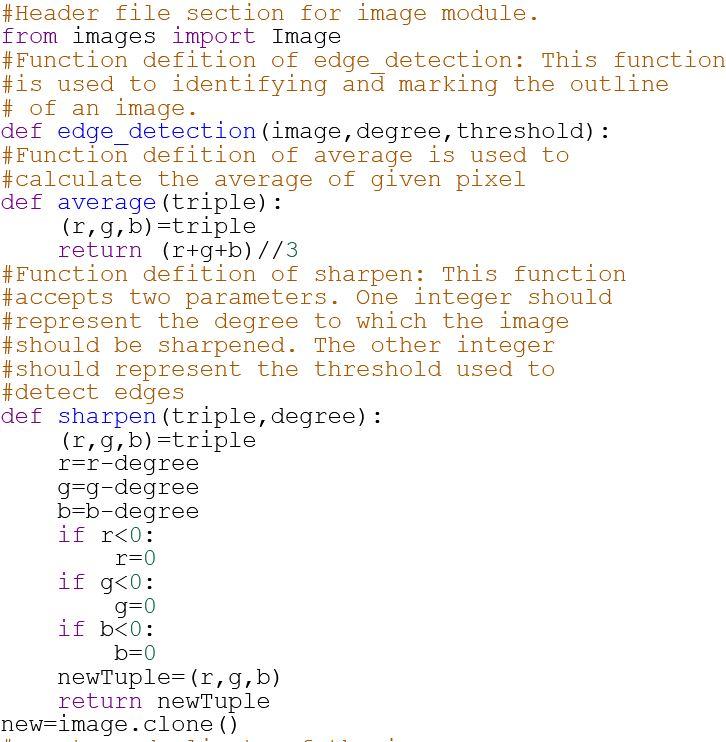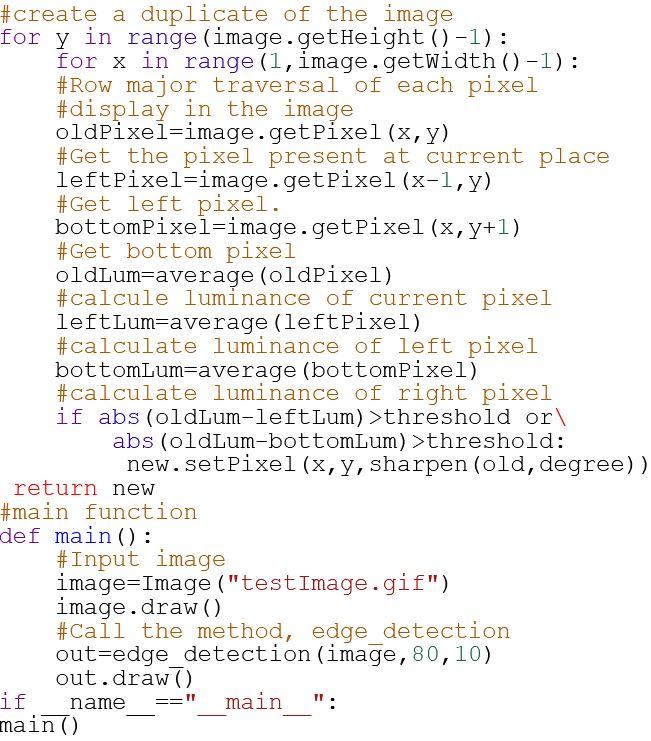def detectEdges(image, amount):
The edge-detection function (detectEdges) described in Chapter 7 and shown below returns a black and white image. Think of a similar way to transform color values so that the new image is still in its original colors but the outlines within it are merely sharpened.
def detectEdges(image, amount):
"""Builds and returns a new image in which the edges of
the argument image are highlighted and the colors are
reduced to black and white."""
def average(triple):
(r, g, b) = triple
return (r + g + b) // 3
blackPixel = (0, 0, 0)
whitePixel = (255, 255, 255)
new = image.clone()
for y in range(image.getHeight() - 1):
for x in range(1, image.getWidth()):
oldPixel = image.getPixel(x, y)
leftPixel = image.getPixel(x - 1, y)
bottomPixel = image.getPixel(x, y + 1)
oldLum = average(oldPixel)
leftLum = average(leftPixel)
bottomLum = average(bottomPixel)
if abs(oldLum - leftLum) > amount or \
abs(oldLum - bottomLum) > amount:
new.setPixel(x, y, blackPixel)
else:
new.setPixel(x, y, whitePixel)
return new
Then, define a function named sharpen that performs this operation. The function should expect an image and two integers as arguments. One integer should represent the degree to which the image should be sharpened. The other integer should represent the threshold used to detect edges.
(Hint: A pixel can be darkened by making its RGB values smaller.)
NOTE: Code_indentation_is_very_important_for_python_code_execution.
Screenshot of code:
Trending now
This is a popular solution!
Step by step
Solved in 2 steps with 4 images











